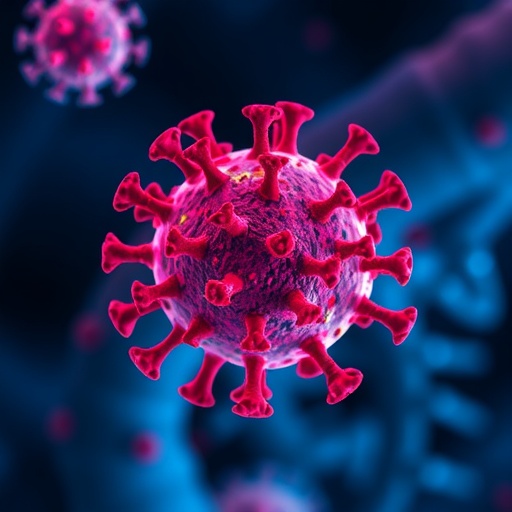A new study to be published online June 25 in JAMA Internal Medicine reports that hospital at home (HaH) care provides a shorter length of stay; reductions in hospital readmissions, emergency department visits, and transfers to skilled nursing facilities; and, improved patient experience versus traditional inpatient care. The study, which spans nearly three years, includes patients with the broadest set of admitting diagnoses ever to be researched, thus strengthening the evidence base for hospital at home care.
Hospital at home provides acute hospital-level care in a patient's home as a substitute for traditional inpatient care. While HaH has been adopted in integrated health care systems and the Veterans Affairs health system, it has not been disseminated broadly due to the absence of a payment mechanism in fee-for-service Medicare. The authors note recent communication with the Secretary of the Department of Health and Human Services and progress towards the development of a payment model that the Centers for Medicare and Medicaid Services (CMS) will organize.
Study Overview
Researchers at the Icahn School of Medicine at Mount Sinai studied patients from November 2014 through August 2017. The study, funded by a Health Care Innovation Award from the Center for Medicare and Medicaid Innovation (CMMI) and The John A. Hartford Foundation, compared outcomes of patients who received HaH care followed by a 30-day post-acute period of home-based transitional care with a control group of hospital inpatients who were HaH-eligible but refused participation or were seen in an emergency department when an HaH admission could not be initiated. Seeking to scale the hospital at home program, Mount Sinai entered into a partnership with Contessa Health, a health care company that manages acute-care services at home through bundled payment arrangements, in August 2017.
Results
The experiences of 507 patients were analyzed in the study, including 295 HaH patients and 212 controls. HaH participants, in contrast to controls, experienced the following outcomes:
- Shorter length of stay (3.2 days vs 5.5 days)
- Lower rates of hospital readmissions (8.6 percent vs. 15.6 percent)
- Lower rates of emergency department visits (5.8 percent vs. 11.7 percent)
- Fewer transfers to skilled nursing facilities (1.7 percent vs. 10.4 percent)
- More likely to rate their medical care highly (67.8 percent vs. 45.6 percent)
- More likely to rate their communications with nurses and doctors, in addition to communications about medicines, highly
"When you compare the patient treated in a hospital versus the home, the improvements are overwhelmingly positive from the point of view of clinical outcomes, patient safety, patient satisfaction, and cost savings," says Albert Siu, MD, MSPH, chair emeritus, Brookdale Department of Geriatrics and Palliative Medicine, Icahn School of Medicine at Mount Sinai. Broad dissemination of hospital at home, though, will require a funding mechanism. "The availability of a payment mechanism is the one obstacle that stands in the way of widespread adoption of hospital at home care," says Dr. Siu.
On June 14, the Secretary of the Department of Health and Human Services (HHS) indicated that the HHS was "keenly interested in ideas for home-based, hospital-level care" and asked the Mount Sinai researchers to work with CMS as it develops a model for hospital care in the home. "We are pleased that the Secretary has asked CMS to explore a payment model that will leverage the work we've done over the past three years. A new payment model would add tremendously to Medicare's portfolio of shared savings programs," says Dr. Siu
Dr. Siu and his team estimate that 575,000 patients in the United States could qualify for HaH care every year. "If we treated just one in five of those patients, Medicare would save about $45 million a year," says Dr. Siu. Reasons for greater efficiencies include shorter lengths of stay when patients are treated at home, reduced hospital readmissions, lower rates of adverse events, and fewer emergency department revisits.
Treating patients at home is part of a much broader drive by Mount Sinai, a health system encompassing seven hospitals in Manhattan, to develop its hospitals into centers of care for the broader community. "The hospital of the future must closely mirror the needs of its community," says Kenneth L. Davis, MD, President and CEO of Mount Sinai. "Knowing when a patient will be better off receiving hospital-level care at home is key. Innovative care models, like hospital at home, ensure patients get the same level of care at home and avoid costly and unnecessary hospitalization."
How Does Hospital at Home Work?
Hospital at home care provides hospital-level services for beneficiaries with selected acute illnesses who would otherwise be hospitalized. Typically, a patient is admitted while in the hospital, then sent home via ambulance, where a physician or nurse practitioner provides home-based acute care services. Nurses visit once or more a day to provide most of the care and a physician or NP sees patients at least daily in person or via video call facilitated by the nurse. Durable medical equipment, phlebotomy, and home radiography are provided when needed. Once the patient has recovered from the acute illness, he or she is discharged and the 30-day post-acute period begins. During this period, nurses and social workers provide self-management support and coordination of care with primary care clinicians, specialists, rehabilitation, and outpatient testing as needed.
###
About the Mount Sinai Health System
The Mount Sinai Health System is New York City's largest integrated delivery system encompassing seven hospital campuses, a leading medical school, and a vast network of ambulatory practices throughout the greater New York region. Mount Sinai's vision is to produce the safest care, the highest quality, the highest satisfaction, the best access and the best value of any health system in the nation. The System includes approximately 6,600 primary and specialty care physicians; 10 joint-venture ambulatory surgery centers; more than 140 ambulatory practices throughout the five boroughs of New York City, Westchester, Long Island, and Florida; and 31 affiliated community health centers. The Icahn School of Medicine is one of three medical schools that have earned distinction by multiple indicators: ranked in the top 20 by U.S. News & World Report's "Best Medical Schools", aligned with a U.S. News & World Report's "Honor Roll" Hospital, No. 13 in the nation for National Institutes of Health funding, and among the top 10 most innovative research institutions as ranked by the journal Nature in its Nature Innovation Index. This reflects a special level of excellence in education, clinical practice, and research. The Mount Sinai Hospital is ranked No. 18 on U.S. News & World Report's "Honor Roll" of top U.S. hospitals; it is one of the nation's top 20 hospitals in Cardiology/Heart Surgery, Diabetes/Endocrinology, Gastroenterology/GI Surgery, Geriatrics, Nephrology, and Neurology/Neurosurgery, and in the top 50 in four other specialties in the 2017-2018 "Best Hospitals" issue. Mount Sinai's Kravis Children's Hospital also is ranked in six out of ten pediatric specialties by U.S. News & World Report. The New York Eye and Ear Infirmary of Mount Sinai is ranked 12th nationally for Ophthalmology and 50th for Ear, Nose, and Throat, while Mount Sinai Beth Israel, Mount Sinai St. Luke's and Mount Sinai West are ranked regionally. For more information, visit http://www.mountsinai.org/, or find Mount Sinai on Facebook, Twitter and YouTube.
Media Contact
Tildy La Farge
[email protected]
646-605-8903
@mountsinainyc
http://www.mountsinai.org




